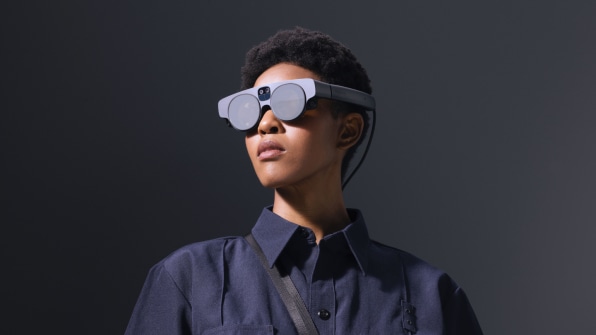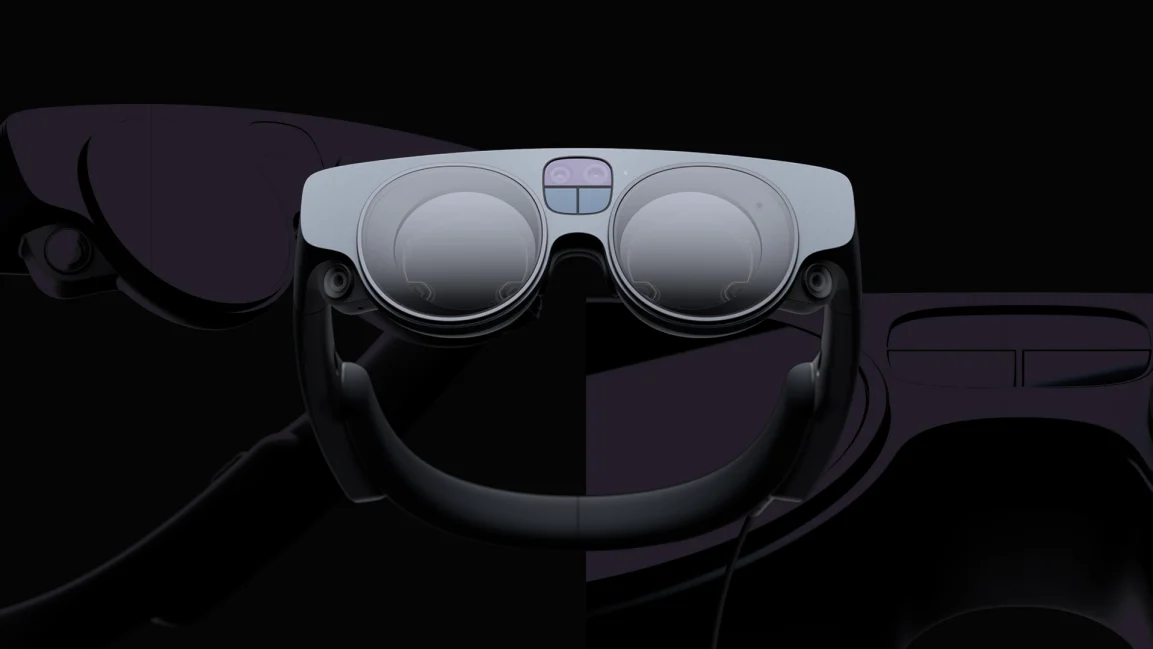Magic Leap, the storied consumer AR company that’s found a second chance servicing the enterprise market, has taken the wraps off its new Magic Leap 2 headset. I found it to be a meaningful improvement over its predecessor, the Magic Leap 1.
The new headset is Magic Leap’s first to be designed for the enterprise market. The Magic Leap 1 (formerly called Magic Leap One Creator Edition) was originally designed for the consumer market, well before the company pivoted to the enterprise in late 2019.
The new headset has an updated design that’s less steampunk-looking than its predecessor. There’s also a noticeable weight difference over the previous version: The company says it’s 20% lighter and 50% smaller in volume than Magic Leap 1.
Magic Leap CEO Peggy Johnson told me the new device is meant to be light enough and balanced enough to be worn all day. After trying it on, I can see how that might be possible. The Magic Leap 2 felt considerably lighter on my head than the Magic Leap 1, and also quite a lot lighter than Microsoft’s HoloLens. Its weight has been carefully balanced between back and front.
Part of the reason the headset is so light is because like the Magic Leap 1, it offloads the processors and battery to a “puck” device that clips to the user’s belt or pocket. The headset connects to the puck with a wire. There’s also a hand controller that you use to navigate and control 3D content.
The 3D imagery I saw while wearing the headset had impressive clarity and richness of color. The text in the menus floating in front of me was sharp and easy to read. It also has the largest field of view I’ve seen in an AR headset, at 70 degrees. That’s considerably larger than that of the HoloLens 2, which is 52 degrees on the diagonal.
Magic Leap’s engineers have done some important work with dimming technology that further enhances the crispness of the graphics. While VR glasses create a dark, closed-in environment, AR glasses are completely open–they let in all the light from the world in front of you. The digital 3D imagery projected by the lenses has to compete with that light. In high-light environments (rooms with big windows, for example) this can reduce the clarity of the digital 3D imagery. It can also make it hard to project digital images that contain true black.

[Photo: courtesy of Magic Leap]
That’s where the dimming comes in. The Magic Leap 2 glasses can shut out much of the light coming in by shutting off certain pixels in the displays, which makes the 3D images projected onto the eyes by the lenses look much more clear. This could be very useful when, say, a team of engineers needs to examine a detailed schematic. It might also be very welcome if the user wanted to watch a movie in the headset. The headset can also dim the light selectively, Magic Leap says, darkening the background behind imagery in certain places in the user’s view while leaving the rest unobstructed.Johnson told me the headset will become generally available in the third quarter. She declined to give the price. (The Magic Leap 1 sold for $2,995.)







![[Photo: courtesy of Magic Leap]](https://images.fastcompany.net/image/upload/w_562)
































